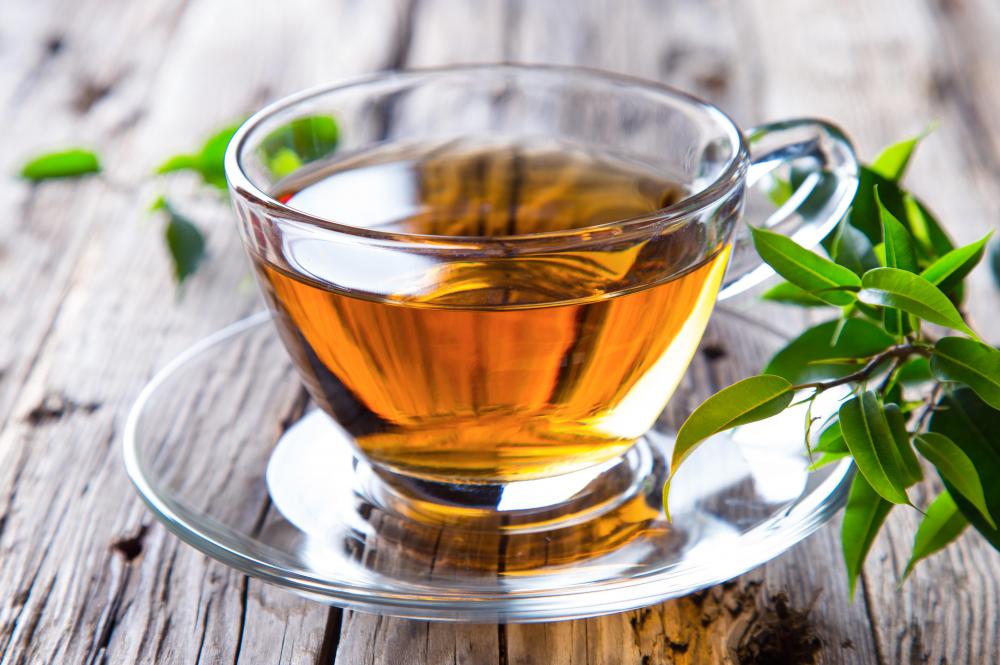At WiseGEEK, we're committed to delivering accurate, trustworthy information. Our expert-authored content is rigorously fact-checked and sourced from credible authorities. Discover how we uphold the highest standards in providing you with reliable knowledge.
What is Involved in a Japanese Tea Ceremony?
The Japanese Tea Ceremony, sometimes called the way of tea, is one of Japan’s most honored and prized customs. The Westerner may mistakenly assume that there is only one type of tea ceremony. Actually, in Japan, there are several schools of thought on the precise ritual of the Japanese Tea Ceremony, but they are still similar enough to describe the basics of this special event.
The ceremony may be conducted indoors or outside. When very important guests are present, the Japanese Tea Ceremony is almost always conducted inside and guests sit on Tatami mats, made of bamboo. Tea ceremonies can really take place anywhere, in homes, gardens or special teahouses, and they are all viewed as an essential part of Buddhism, a stopping and observation of each tiny detail to truly be in the moment.

Each tea ceremony has a host or hostess who invariably wears a kimono. The host determines the length of the ceremony — the longest ones can last for over four hours. Before participating in the Japanese Tea Ceremony, most guests wash their hands as a sign of spiritual readiness.
Sometimes the Japanese Tea Ceremony first includes a light meal called kaiseki. After the meal is finished, they usually leave the shelter where the tea ceremony is served until the host or hostess calls them back. The ceremony then truly begins with eating small candies or sweet things. Each guest carries a paper called kaishi, upon which to put the sweets when they are served by the host.

What then follows in the Japanese Tea Ceremony is cleaning of the instruments used to make the tea. This is where different schools of thought may change the ceremony slightly. Cleaning of the tea scoop, tea bowl, and the whisk for beating the tea are cleaned in very precise ways, with ritually prescribed movements and gestures. Guests observe this process carefully, and often remain fairly quiet throughout the Japanese Tea Ceremony.
Once all the tea instruments have been cleaned, the tea is made, usually with green tea powder. If at first a thick tea powder like koicha is served, then another thin tea type will follow. In many cases, all guests drink from the same bowl, though some variants may provide each guest with their own bowl or cup.
The host bows to the guest there with the most honor, who drinks from the bowl first, and then returns the bow to the host. The guest then must turn the bowl so that when it is presented to the next guest, the second guest’s lips will not touch the same place on the bowl, as did the first guest. Bows are exchanged each time the bowl is passed from guest to guest.
After the drinking of the tea ritual has been performed, the host again washes all the equipment. Guests may then ask to look at each piece, but they must be handled with extreme caution, as they are usually rare, one of a kind, and antique pieces. Once the examination of the tea utensils are over, guests again bow to the host and leave. The Japanese Tea Ceremony is then considered over.
AS FEATURED ON:
AS FEATURED ON:












Discussion Comments
I've heard that many people in Japan take special classes in order to host tea ceremonies in the best way possible. I think this shows how important tea ceremonies are in Japan.
@bluedolphin-- Yes, I've been lucky enough to participate in a Japanese tea ceremony. It was a very different and exciting experience for me. I think the most important aspect of a Japanese tea ceremony is that it teaches one courtesy and patience. No one makes sudden or inappropriate movements. Everything is so gentle and peaceful. It truly is a spiritual experience.
In regards to the tea cup and hygiene, that is certainly not something you need to worry about. The host and guests are very careful about this. Even if the guests drink from the same cup, the rim is wiped after each use. I personally don't think that there is any health risk involved in this ceremony.
I've never partaken in a Japanese tea ceremony. It sounds like a beautiful event though and I would love to experience it sometime. But I hope that I get my personal cup because it's not hygienic for several people to drink from the same cup. Even if the cup is turned so that people don't put their lips on the same place, germs will still find a way into the cup. So I think I would request my own cup but I'm not sure if my host would feel insulted if I did!
Has anyone here been part of a Japanese tea ceremony? What was it like?
Post your comments